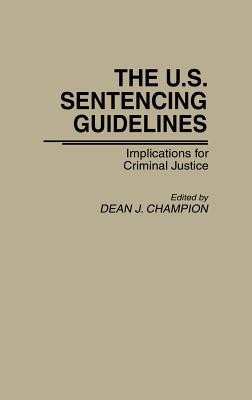
- We will send in 10–14 business days.
- Author: Dean John Champion
- Publisher: Praeger
- ISBN-10: 0275933245
- ISBN-13: 9780275933241
- Format: 15.6 x 23.4 x 1.8 cm, hardcover
- Language: English
- SAVE -10% with code: EXTRA
Reviews
Description
A distinguished group of noted criminal justice specialists here examines the impact of the new U.S. sentencing guidelines, imposed in 1987, on law enforcement, the prosecution and courts, and corrections. Although these guidelines were created with the expressed purpose of increasing judicial fairness and reducing prison overcrowding, the contributors argue that their long range effects will be to aggravate present overcrowding problems to intolerably high levels. To make their case, contributors address individually such issues as plea bargaining, the new role of parole and corrections officers, the likely effects of the scheduled abolition of the parole board in 1992, and more. Both students of criminal justice and practicing parole and corrections officers will find these chapters enlightening reading.
Following an introductory overview that puts the U.S. sentencing guidelines in perspective, two chapters discuss their impact on law enforcement, officer discretion, and crime control and deterrence. Turning to an exploration of the courts, the contributors address prosecutorial discretion in plea bargaining, judicial discretion and sentencing disparities, case processing and sentencing alternatives, and how predictions of dangerousness affect the sentencing process. In their analysis of the relationship between the sentencing guidelines and corrections trends, the contributors examine issues such as community-based corrections and privatization, inmate litigation and constitutional issues, and recidivism. Finally, editor Dean Champion offers a perceptive synthesis of the volume by summarizing the serious problems posed by imposition of the U.S. sentencing guidelines. Four appendices provide additional related information for the student and researcher.
EXTRA 10 % discount with code: EXTRA
The promotion ends in 19d.16:30:19
The discount code is valid when purchasing from 10 €. Discounts do not stack.
- Author: Dean John Champion
- Publisher: Praeger
- ISBN-10: 0275933245
- ISBN-13: 9780275933241
- Format: 15.6 x 23.4 x 1.8 cm, hardcover
- Language: English English
A distinguished group of noted criminal justice specialists here examines the impact of the new U.S. sentencing guidelines, imposed in 1987, on law enforcement, the prosecution and courts, and corrections. Although these guidelines were created with the expressed purpose of increasing judicial fairness and reducing prison overcrowding, the contributors argue that their long range effects will be to aggravate present overcrowding problems to intolerably high levels. To make their case, contributors address individually such issues as plea bargaining, the new role of parole and corrections officers, the likely effects of the scheduled abolition of the parole board in 1992, and more. Both students of criminal justice and practicing parole and corrections officers will find these chapters enlightening reading.
Following an introductory overview that puts the U.S. sentencing guidelines in perspective, two chapters discuss their impact on law enforcement, officer discretion, and crime control and deterrence. Turning to an exploration of the courts, the contributors address prosecutorial discretion in plea bargaining, judicial discretion and sentencing disparities, case processing and sentencing alternatives, and how predictions of dangerousness affect the sentencing process. In their analysis of the relationship between the sentencing guidelines and corrections trends, the contributors examine issues such as community-based corrections and privatization, inmate litigation and constitutional issues, and recidivism. Finally, editor Dean Champion offers a perceptive synthesis of the volume by summarizing the serious problems posed by imposition of the U.S. sentencing guidelines. Four appendices provide additional related information for the student and researcher.


Reviews